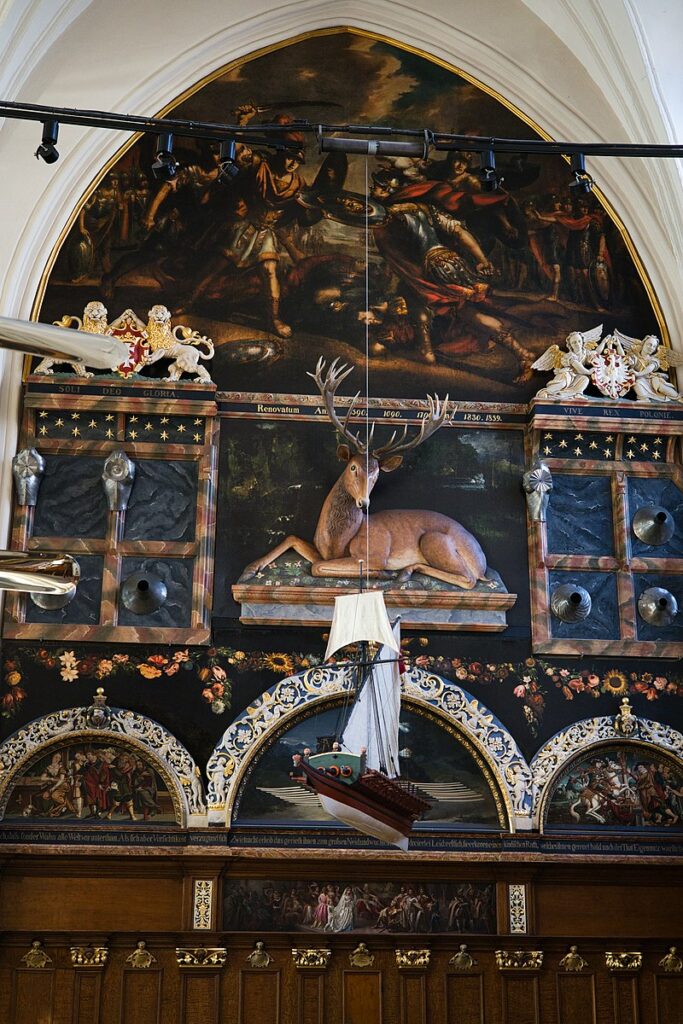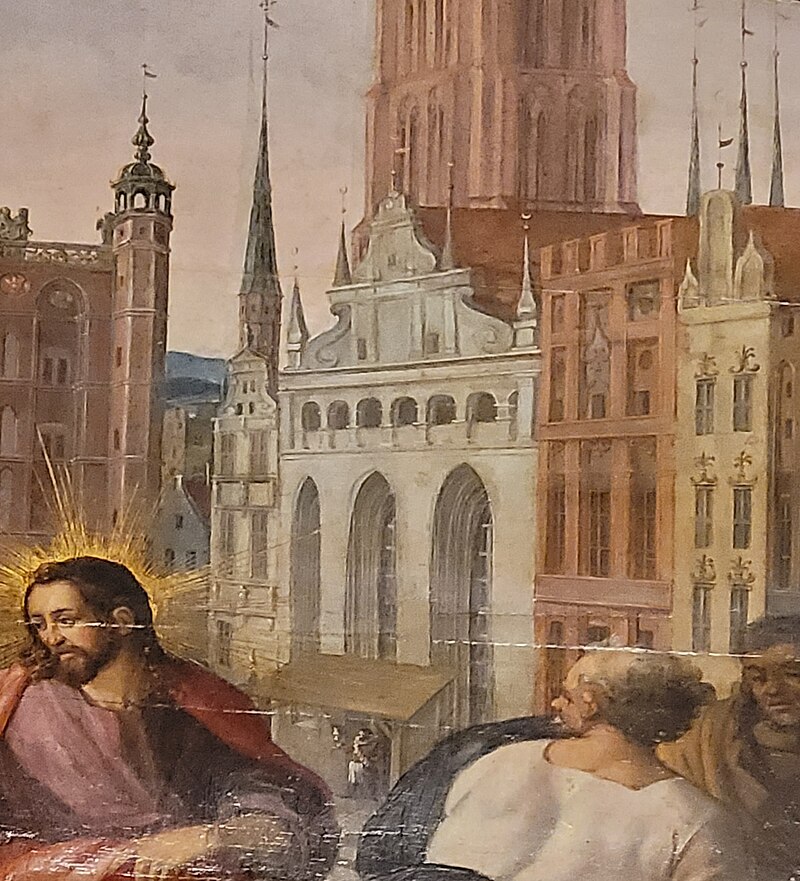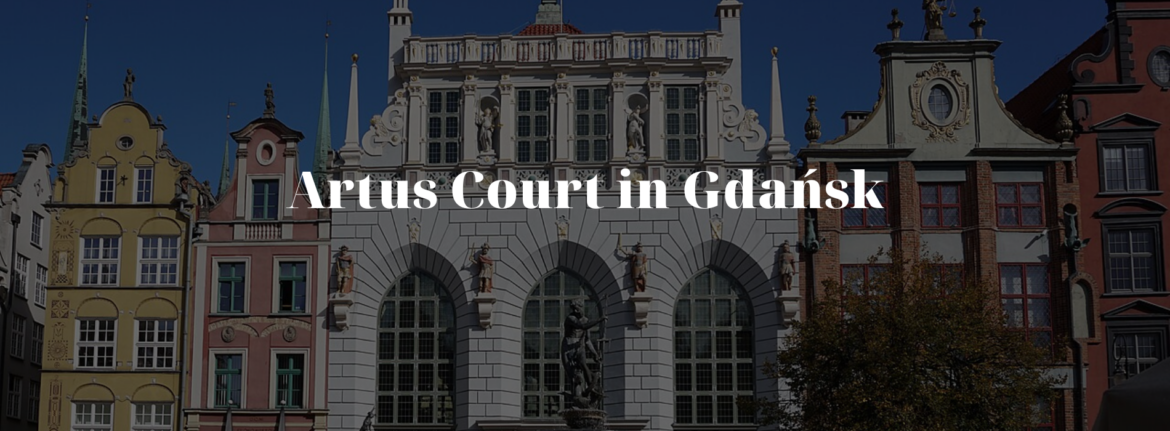Artus Court in Gdańsk is one of the city’s most significant historical landmarks, once serving as a centre for social and commercial life. Today, it houses the Gdańsk Museum and functions as a prestigious venue for official city ceremonies.
Origins and the Medieval Period
The name „Artus Court” is derived from the legend of King Arthur, a symbol of chivalry and honour. The building was erected by the Brotherhood of St. George, an organisation composed of so-called „junkers” (knights) from wealthy German families. It was designed as an exclusive meeting place for knights and affluent townspeople, strictly prohibiting entry to craftsmen, merchants, and hired labourers. Wealthy merchants and foreign visitors gathered there in the evenings, enjoying drinks and entertainment provided by musicians, singers, acrobats, and jesters.
Although the venue was meant for relaxation rather than business, in theory, discussing trade matters was banned within its walls. However, these rules were not always strictly observed. Gambling, for instance, was officially prohibited but remained a popular pastime among guests.
The first recorded mention of the building appears in 1357 in a municipal document regarding land rent, which refers to the structure erected between 1348 and 1350 under the name „Curia Regis Artus” (Court of King Arthur).


Renaissance and Baroque Transformations
In 1476, a fire severely damaged Artus Court, but it was quickly rebuilt. In 1552, its façade was redesigned in the Renaissance style, and in 1617, architect Abraham van den Blocke gave it distinctive Mannerist features. The façade was adorned with statues of ancient heroes such as Scipio Africanus and Themistocles, along with allegorical figures representing Strength and Justice.
During this period, Artus Court became the meeting place for merchant guilds such as the Lübeck Bench and the Brotherhood of St. Reinhold, which organised gatherings and ceremonies there. By 1530, the building also served as a venue for public court hearings, ensuring transparency in judicial proceedings.
Decline and Rebirth in the Modern Era
From the early 17th century, wars and plagues ravaged Gdańsk, disrupting its once-thriving social life. The golden age of Artus Court faded as repeated closures and attempts to restore its former function proved unsuccessful.
By 1631, declining discipline among members of the brotherhood prompted city authorities to intervene. Reports indicate that some members engaged in excessive drinking, drumming, and loud quarrels, even late at night. Eventually, in 1742, Artus Court was repurposed as a stock exchange at the request of Gdańsk’s merchant firms. This transition marked the end of its role as a social club.
Over the following centuries, the building continued to serve as a hub of trade and commerce. Its grand interiors were decorated with artworks, including paintings, sculptures, tapestries, and model ships, reflecting Gdańsk’s maritime heritage.
Destruction and Post-War Reconstruction
Artus Court suffered severe damage during World War II. However, thanks to the efforts of conservators and art historians, it was meticulously reconstructed between 1948 and 1952.
A particularly symbolic event occurred in March 1945, during the battle for Gdańsk. Two Polish tank crew members, Second Lieutenant Bronisław Wilczewski and Warrant Officer Zbigniew Michel, climbed onto the roof of Artus Court, tore down the Nazi flag, and replaced it with the Polish national flag. A commemorative plaque inside the building honours their bravery.
In 1967, Artus Court was officially recognised as a historical monument and listed in the national register of heritage sites. Today, it operates as a branch of the Gdańsk Museum, welcoming visitors while also serving as a prestigious venue for state and municipal events.
Architectural Features
The Façade
The façade of Artus Court is a prime example of Dutch Mannerism, featuring elaborate ornamentation and numerous sculptures depicting historical and allegorical figures. At its centre, the portal is adorned with medallions portraying King Sigismund III Vasa and his son, Władysław IV. At the top of the façade stands a statue of Fortuna, symbolising prosperity and success.
The Interior
Inside, Artus Court boasts a vast Gothic hall with soaring ceilings, creating an impressive sense of grandeur. The walls are adorned with wooden panelling and paintings, many depicting mythological and historical scenes.
Among the most notable artworks are The Last Judgment by Anton Möller and Orpheus Among the Animals by Hans Vredeman de Vries. A highlight of the interior is the monumental 11-metre-high tiled stove, constructed between 1545 and 1546. This spectacular piece features 520 ceramic tiles depicting European rulers and allegories of virtues.
Another striking feature is the late-15th-century Gothic sculpture of St. George slaying the dragon, reflecting the knightly traditions that inspired the creation of Artus Court.
Cultural Significance
For centuries, Artus Court played a crucial role in Gdańsk’s social and cultural life. It was a meeting place for elites, a centre for commerce, and a venue for artistic events. Today, it stands as a testament to the city’s rich history and attracts visitors from Poland and beyond.
Practical Information
As part of the Gdańsk Museum, Artus Court is open to the public. Visitors should check the museum’s official website for current opening hours and ticket prices. Due to its status as a ceremonial venue, access may occasionally be restricted during official city events.
